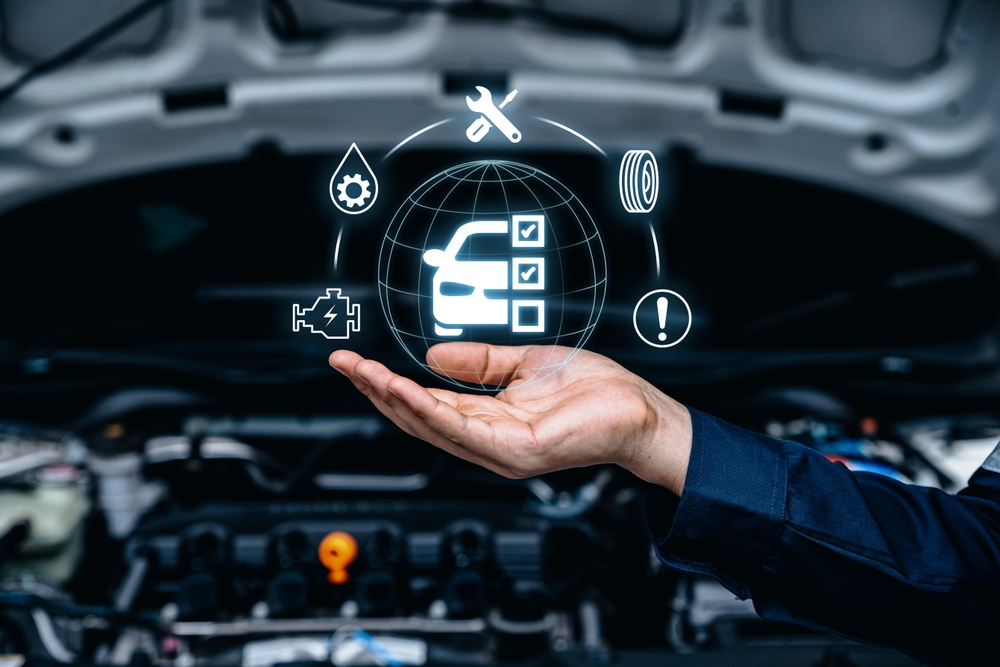Types of Car Engines An Expert Guide to Automotive Engines

Understanding car engines is like learning about the heart of your car and having a special tool for better driving.
Car engines are available in a broad range, depending on the type of fuel they use, their layout configuration, and the number of cylinders.
Additionally, each engine type has its own special features and sounds. Some engines run on petrol, making a vibrating noise when they're running. Whereas, some work more on power and torque, giving you a strong performance when you hit the Aussie roads.
So, knowing the basics of car engine types helps you become a smarter driver and car owner.
What are the different Types of Car Engines?
1. Internal combustion engines:
These car engines are special power plants that help the car to move. They work by burning fuel, like gasoline or diesel. This fuel burns and creates a powerful force that makes the car's wheels spin, allowing it to move forward.
Let’s discuss the two main types of internal combustion engines (ICE):
|
Gasoline Engine |
Diesel engine |
|
- Uses gasoline as fuel. - Needs a spark plug to create a spark that ignites the fuel-air mixture, causing controlled explosions. |
- Uses diesel fuel. - Ignites the fuel by compressing the air inside the cylinders until it gets hot enough to make the diesel fuel ignite on its own. |
2. Petrol Engine:
They are the most common and obvious of all car engine types that work using something called internal combustion.
Inside the engine, there's a mix of air and petrol that gets ignited in the cylinders. Thus, this ignition creates the power needed to move the vehicle forward.
One cool thing about petrol engines is that they can speed up really quickly. They’re great for when you want to drive in a more exciting way. But there's a downside. Because they use fossil fuels, it can harm the environment. Therefore, it's important to think about how fuel-efficient your car is if you care about the environment.
There are 5 different types of petrol engines. Let’s briefly review them:
- Inline-Four Engine: Four cylinders in a row; balances power and fuel efficiency; common in smaller and mid-sized cars.
- V6 Engine: Six cylinders in a V shape; more power than inline-four; often used in mid-sized to larger vehicles.
- V8 Engine: Eight cylinders in a V shape; powerful; found in high-performance cars and larger vehicles.
- Boxer Engine: Cylinders horizontally opposed; low center of gravity; seen in certain sports cars.
- Rotary Engine: Rotating triangular rotors instead of pistons; smooth operation; found in some sports cars.
3. Diesel Engine:
Diesel engines have unique characteristics and functioning differences compared to other engine types. They’re best for their notable fuel efficiency and delivering robust torque through a process known as compression ignition.
Further, they compress the air within the cylinder until it reaches a high temperature, causing the injected diesel fuel to suddenly ignite. This compression ignition process contributes to the efficiency of diesel engines to enhance their overall longevity.
Moreover, they have the following types:
|
Common Rail Direct Injection (CRDI) Diesel Engines |
Indirect Injection (IDI) Diesel Engines: |
Turbocharged Diesel Engine:
|
|
- Use a common rail to deliver fuel to the injectors at high pressure.
- Helps increase fuel combustion efficiency and overall engine performance. |
- Contain a pre-chamber where fuel is injected before entering the main combustion.
- Historically used design, works for certain applications with simpler mechanics.
- Generally less common in modern diesel engines. |
- Utilize a turbocharger to compress incoming air, increasing the air density before it enters the engine.
- Enhances power and efficiency by allowing the engine to burn more fuel, resulting in improved performance. |
4. Electric Engines:
It is like a big, powerful battery that makes the car go. Instead of using fuel like petrol or diesel, it runs on electricity. Additionally, there are no loud noises inside the car because electric engines are quiet.
Moreover, they help the environment, as they don't produce harmful emissions like some other engines. To keep the electric engine working, the car needs to be charged using a special plug.
Thus, it's like having a big, silent battery that you charge to make your car move smoothly and without polluting the air.
5. Hybrid Engines
A hybrid engine operates by integrating both an internal combustion engine (fueled by petrol), and an electric motor (powered by a battery). The combined effect of these two power sources allows less fuel usage and reduces gas emissions compared to traditional engines.
Moreover, there are three main types of hybrid engines used in Australia:
Parallel Hybrid Engine:
- These hybrids use power from both the regular engine (that runs on petrol) and an electric motor at the same time.
- They're good at using electricity and petrol efficiently, making them a great choice for driving in different situations.
Series Hybrid Engine:
- They use an electric motor to power the car, the internal combustion acts as a generator (helper), making electricity.
- They work well in city traffic where you have to start and stop a lot. Additionally, they help keep the air cleaner by reducing gas emissions.
Plug-in Hybrid Engine:
- A more advanced hybrid, has a larger battery pack that can be charged externally, usually by plugging into an electrical outlet.
- Allows users to recharge the battery, offering flexibility and reducing overall fuel consumption.
6. LPG Engines
This type of car engine runs on Liquefied Petroleum Gas, which is a special kind of fuel. LPG is a mix of gases that become liquid under pressure, used as an alternative to regular gasoline or diesel.
The advantage is that it is cleaner, produces less pollutants, and it can be more economical for the driver.
Therefore, if a car has an LPG engine, it means it's designed to run on this specific kind of fuel instead of or alongside traditional fuels like gasoline or diesel.
7. CNG Engines:
Compressed Natural Gas (CNG) engines use natural gas as fuel. Natural gas is compressed and stored in special tanks in the car. When the engine needs power to run, the compressed natural gas is released, mixed with air, and then ignited to produce energy that makes the car move.
Moreover, they are more environment-friendly compared to traditional gasoline engines because they produce fewer harmful emissions.
Many people choose CNG engines as an alternative to gasoline for their cars, helping to reduce air pollution and promote clean transportation.
Conclusion:
To conclude, there’s a variety of car engines in Australia's car industry, including internal combustion engine, petrol engine, diesel engine, hybrid engines, electric engines, LPG, and CNG.
Each engine has its own features, layout, and functionality that suit different needs. Therefore, picking the right type is crucial to make sure the engine power matches how you want to use your car. So, learn about the latest advancements to enjoy driving in the future.
And, when the time comes to say goodbye to your car…
Aussie Cash for Cars is here to help! Now, you can sell your car for cash in Brisbane. We give you the best cash for your car and take it away from your home quickly.
Just give us a call, and we'll tell you how much your car is worth!
